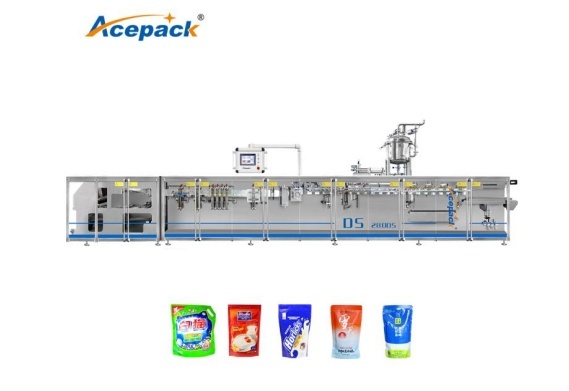In the realm of modern automated production lines, packaging machinery stands as a cornerstone for enhancing production efficiency and ensuring product quality. Among them, horizontal packaging machines, distinguished by their high efficiency, flexibility, and strong adaptability, have garnered widespread acclaim across numerous industries. This brief article aims to provide a straightforward introduction to the working principles, key features, applications, and future prospects of horizontal packaging machines.

Working Principles
Horizontal packaging machines operate primarily with their main components and packaging materials moving horizontally throughout the packaging process. Typically comprising a feeding system, forming mold, filling device, sealing mechanism, cutting unit, and output system, these machines function seamlessly. The feeding system introduces products either continuously or intermittently into the forming mold. Subsequently, a precise metering and filling device dispenses a predetermined amount of material into the packaging material. The sealing mechanism then applies heat or cold sealing to ensure package integrity. Finally, the cutting unit separates individual packages, which are neatly arranged or automatically boxed by the output system, completing the packaging cycle.
Key Features
- Efficient Automation: Equipped with advanced PLC control systems, horizontal packaging machines facilitate fully automated packaging operations, significantly boosting productivity and minimizing manual intervention.
- Easy Adjustment: Simple parameter settings allow for rapid adjustments to package dimensions and speeds, catering to the packaging needs of various product specifications.
- Precision and Consistency: Advanced sensors and control algorithms ensure precise filling, sealing, and cutting, maintaining consistent package quality across batches.
Applications
Horizontal packaging machines find widespread application in industries such as food and beverages, pharmaceuticals, cosmetics, and chemicals. They are particularly suited for packaging items like snacks, granulated products, liquids in pouches, and various consumer goods, offering a versatile solution for diverse packaging requirements.
Future Prospects
As technology advances, horizontal packaging machines are evolving towards higher levels of automation, intelligence, and environmental friendliness. Innovations in materials handling, sensing technologies, and sustainable packaging materials promise to further enhance machine capabilities and broaden their appeal. Moreover, the integration of IoT and big data analytics will enable predictive maintenance and optimized production planning, driving operational efficiency to new heights.
In conclusion, horizontal packaging machines represent a cornerstone of modern packaging technology, offering a blend of efficiency, flexibility, and precision. As industries continue to embrace automation and seek sustainable solutions, the role of these machines in shaping the future of packaging becomes increasingly significant.




